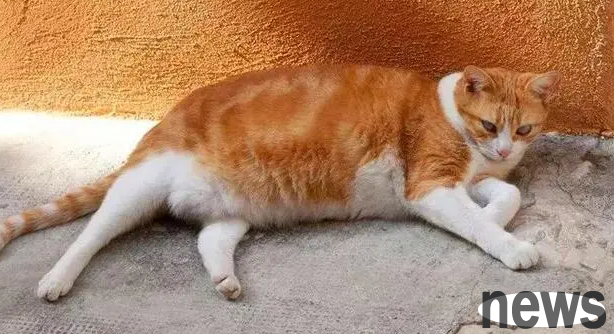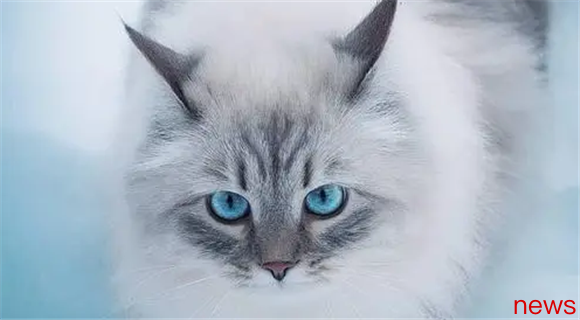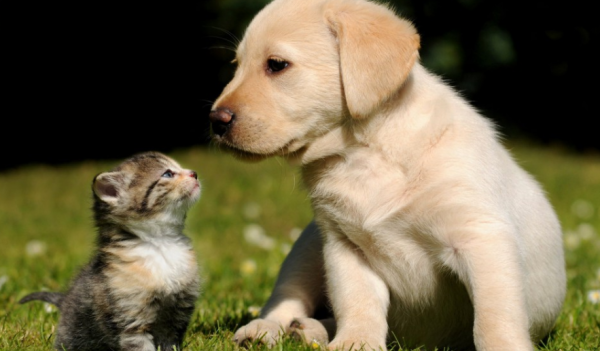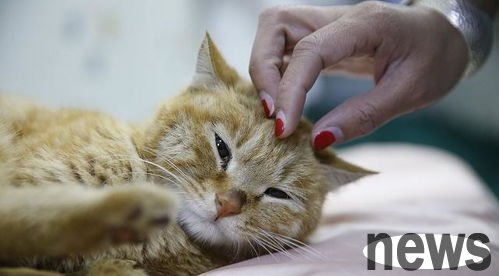Key points for distinguishing simple and secondary obesity in dogs and cats
According to international standards, dogs and cats exceed 10% to 15% of their standard weight, which is called obesity. In developed countries, the incidence of obesity is 10% to 40% for dogs and >20% for cats. The incidence of dog obesity in Beijing in my country is about 43.3%, the rate of overweight cats is 23%, and the incidence of cats is 6%. Obesity in dogs and cats is easy to diagnose, but it is difficult to distinguish between simple obesity and secondary obesity. In order to effectively prevent and treat dog and cat obesity, the key points of distinguishing simple obesity and secondary obesity are introduced as follows.

1
Medical history survey
1.1 Simple obesity
Simple obesity is mainly caused by genetic factors, overnutrition or lack of exercise, etc. The medical history survey should be conducted in terms of variety, nutrition, exercise, age, gender, etc. For example, breeds, pugs, dachshunds, etc., domestic short-haired cats and hybrid cats are more common than purebred cats; nutrition, feeding high-fat, high-energy foods and snacks are more common; exercise, lack of exercise is more common; age, dogs are more common from 5 to 12 years old, cats are more common from 5 to 10 years old; gender, female dogs are more common and male cats are more common.
1.2 Secondary obesity
Secondary obesity is mainly caused by endocrine lipid metabolism disorders, pathological changes in endocrine organs or abnormal hormone secretion. During the medical history investigation, dogs and cats should be investigated for history of hyperadrenal cortex, hypothyroidism, iatrogenic or diabetes. For example, iatrogenic obesity in dogs and cats (obesity caused by treatment is called iatrogenic obesity), it is often understood in medical history surveys that obesity is caused by long-term use of glucocorticoids, chlorpromazine, insulin, protein synthesis preparations or Xismin drugs in certain diseases.
2
Clinical examination
Simple obesity, uniform obesity throughout the body, normal appetite and urine volume, fur gloss, and no symptoms of endocrine and metabolic diseases. Secondary obesity often presents symptoms such as hyperappetism, polyuria, drooping abdomen, obesity in the trunk, dry and dull fur, increased dandruff, pigmentation, and sometimes symmetrical hair loss without itching, or laziness, insomnia, decreased vigilance and excitability.

3
Laboratory test
3.1 Simple obesity
Normal blood lipids in the early stage; in the middle and late stages, serum total cholesterol, serum lipoprotein, neutral fat and lipids can be seen, and serum insulin can be increased, and obese cats have hypertriglyceridemia.
3.2 Secondary obesity
(1) Hypothyroid obesity
Usually the serum free thyroxine (FT4), total thyroxine (TT4), and thyroxine (TSH). If TT4 is reduced and FT4 is also reduced, it can be diagnosed as hypothyroidism obesity; if TSH is increased, total thyroxine TT4 is reduced (or FT4 is reduced), it can be diagnosed as primary hypothyroidism obesity; if TSH is reduced, TT4 is reduced (or FT4 is reduced), it can be diagnosed as secondary hypothyroidism obesity.
(2) Canine hyper-adrenal cortex obesity
The blood test shows a typical "stress leukocyte image", that is, neutral and mononuclear leukocytes, lymphocytes are reduced, and red blood cells are normal. There is mild increase in blood sugar, decreased urea and creatine, increased plasma cortisol, increased serum alanine aminotransferase (ALT) activity, increased cholesterol concentration, and often hyperlipidemia. The specific gravity of urine is below 1.007. In clinical practice, corticotropic hormone (ACTH) stimulation test, low-dose dexamethasone inhibition test (LDDST) and urinary cortisone creatinine ratio (UCCR) are often used to diagnose hyperadrenal corticopathy in dogs.
The reference value before ACTH stimulation is 55 ~ 166 nmolL, and the reference value 2h after ACTH stimulation is 166 ~ 497 nmol/L. The increase is obvious before and after ACTH stimulation, which can be diagnosed as hyperactive obesity in canine adrenal cortex. The advantages of ACTH stimulation test are high specificity (total accuracy is 80% ~ 85%), simple and fast (2~3 h), and can monitor the therapeutic effects of mitotan and triplostein; the advantages of LDDST are high sensitivity, and can detect 95% of adrenal hyperactivity (PDH) and 100% of adrenal tumors (AT). UCCR is highly sensitive but very low specificity and is only used for preliminary screening. The diagnosis of adrenal hyperfunction requires a comprehensive analysis of clinical symptoms, blood tests and endocrine tests.
(3) Diabetic obesity
Although the typical symptoms of diabetes are drinking more, eating more, urine more and weight loss, most of them have signs of obesity, which is mainly caused by obesity-induced diabetes. Blood sugar is measured after 12 hours of fasting. Blood sugar in dogs and cats is >11.10 mmolL and blood sugar in cats is >22 mmol/L, which can be diagnosed as diabetes. If the urine sugar is strongly positive and inflammatory cells, red blood cells and ketone bodies appear in the urine, it indicates kidney damage and ketoacidosis. Serum insulin concentration was measured on 12 hours on an empty stomach, and the normal value was (86.16±35.90) pmol/L. Dogs and cats with type 1 diabetes can't even be measured in the insulin concentration below normal values, while dogs and cats with type 2 diabetes are equal to or greater than normal values.
To sum up, simple obesity, medical history survey can find pathogenic factors such as genetic, nutritional or lack of exercise, and the whole body is obese and has no endocrine and metabolic diseases.. Secondary obesity, clinically symmetric hair loss, dandruff loss and skin pigmentation, laboratory tests decreased TT4 and FT4 also decreased, which can be diagnosed as hypothyroidism; if blood tests show a typical "stress leukocyte image", both increased significantly before and after ACTH stimulation (the reference value before ACTH stimulation is 55~166 nmol/L, and the reference value 2h after ACTH stimulation is 166~497 nmol/L), which can be diagnosed as hyperadrenal cortical obesity in dogs; blood sugar is measured after 12 hours on an empty stomach, blood sugar is >11.10 mmol/L, and blood sugar is >22 mmol/L in cats, which can be diagnosed as diabetic obesity; iatrogenic obesity is differentiated based on the history of relevant medications.















